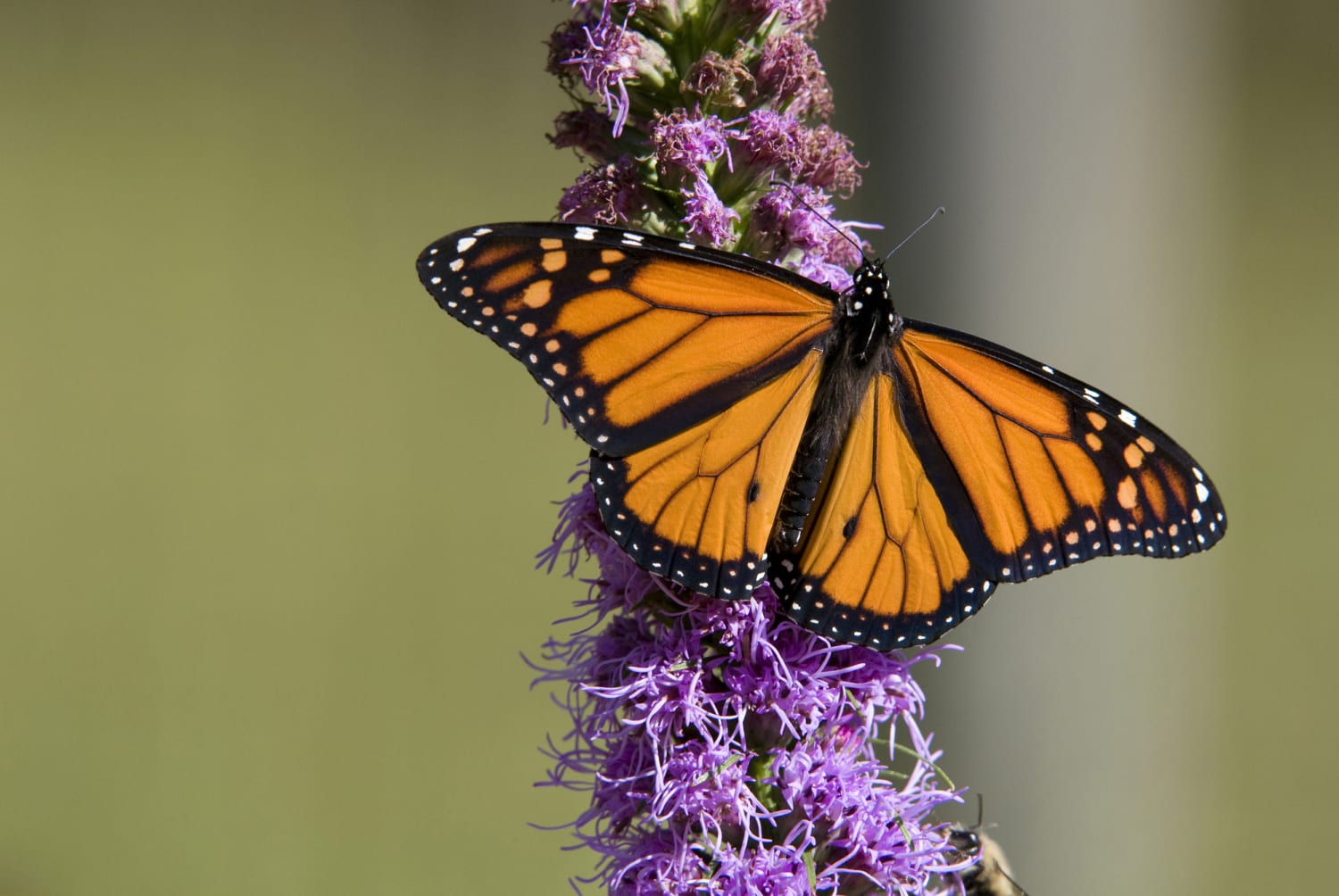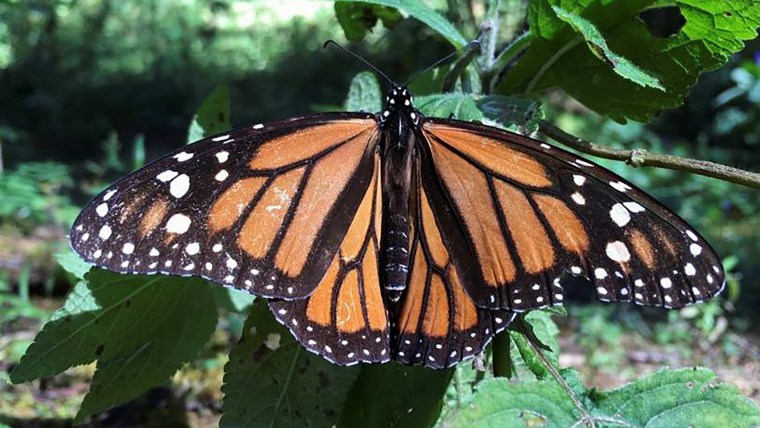North America is home to many iconic living species: bald eagles, grizzly bears, bison and monarch butterflies. But monarch butterflies in the U.S. might not be around much longer. The migratory monarch butterfly, found across the continental U.S., has been designated as endangered by the International Union for Conservation of Nature. While things don’t look good for monarchs right now, there are actions we can take today to protect our flying friends and help them see tomorrow.
You might think it odd that I place a butterfly alongside the bald eagle, but migratory monarch butterflies are remarkable creatures.
You might think it odd that I place a butterfly alongside the bald eagle, but migratory monarch butterflies are remarkable creatures.
To start, monarch caterpillars are picky eaters, gorging themselves on milkweed — a toxic plant. They have the unique ability to tolerate milkweed poison, meaning they don’t have to compete with other species for food, and they become poisonous themselves.
As adults, monarch butterflies typically weigh less than half a gram, so light that nine of them would be outweighed by a sheet of paper. For the first three generations born in a year, adults live for a few weeks, a short life for a fragile flier. But the fourth generation does something truly extraordinary.
Monarchs born in the fourth and last generation of the year can live for several months as the butterflies migrate as much as 3,000 miles south to overwinter in warmer climes. Some travel all the way from the shorelines of the Great Lakes across the Great Plains through central Texas to humid mountain forests in Mexico. West of the Rockies, they head from the Pacific Northwest to Southern California. It’s the only butterfly known to migrate two ways, like birds do.
The two populations in the East and West are likely genetically linked, but they are faring worse in the West. In the East, the monarch population has decreased by about 80%. This is a stunning decline of hundreds of millions, but it pales next to the near-total collapse of the Western population.
In the 1980s, there may have been 10 million butterflies in the Western population. In 2021, there were 1,914. Imagine if the population of New York City fell below 2,000 people, and that is what has happened to monarch butterflies on the West Coast.
Humanity has seen — and caused — similar collapses. In the early 19th century, it’s estimated that 3 billion passenger pigeons lived in North America. John Audubon wrote of a flock of passenger pigeons so large it blocked out the sun for three days. But habitat destruction and unrestrained hunting meant that by the end of the 19th century, there were none alive in the wild. The last passenger pigeon died in a zoo in 1914. If we don’t act, the migratory monarch butterfly could become like the passenger pigeon, becoming just a memory you will tell your grandchildren about.
Humanity has seen — and caused — similar collapses. In the early 19th century, it’s estimated that 3 billion passenger pigeons lived in North America.
Research suggests the biggest factor affecting monarch population is climate change, which is changing the weather during their breeding season. This makes efforts to fight climate change central to saving these imperiled insects. It’s also important that migratory monarchs receive protection at the federal and state level. In 2020, they became a candidate for protection under the U.S. Endangered Species Act, but they have not been added yet.
There are also things we can do at the individual level to help save monarch butterflies. Milkweed often grows in farm fields, which helps monarchs but hurts farms, as milkweed reduces crop yields. Research shows that as herbicide use to control milkweed went up, monarch populations went down, and pesticides are often found on milkweed leaves.
This brings us to some simple ways to help monarch butterflies.
Avoid pesticide use in your yard and garden, which can kill milkweed, monarchs and many other good organisms. Remove problematic plants by hand when you can, and if you have to use pesticides, apply them at the recommended times and choose less toxic options, which are more likely to hurt pests and not milkweed or butterflies (or people).
Plant milkweed in your yard or garden. There are many kinds of milkweed, so it’s important to choose the right species: one that is native to your area and that will thrive where it is planted. With varieties from antelope horn to zizotes, just don’t choose tropical milkweed, as it can spread a monarch parasite and disrupt migration. (The California Department of Food and Agriculture has designated tropical milkweed as a noxious weed.)
Milkweed can be complemented with native flowering plants so that you can provide food for all stages of the monarch’s lifecycle. The nonprofit Monarch Watch at the University of Kansas offers advice on what makes for a good monarch waystation. You can even get your backyard certified as an official monarch waystation.
With considerable time and effort, we’ve been able to increase bald eagle, grizzly bear and bison populations after historic lows. Let’s do the same for monarchs.
Source: | This article originally belongs to Nbcnews.com










